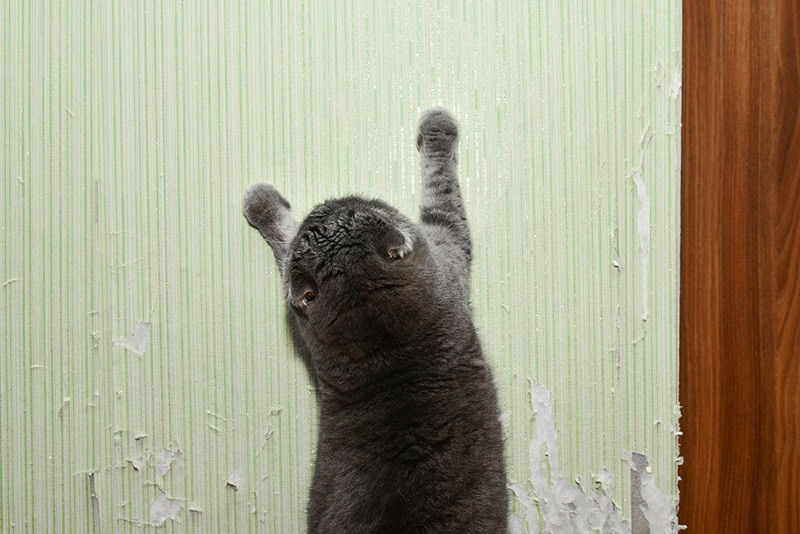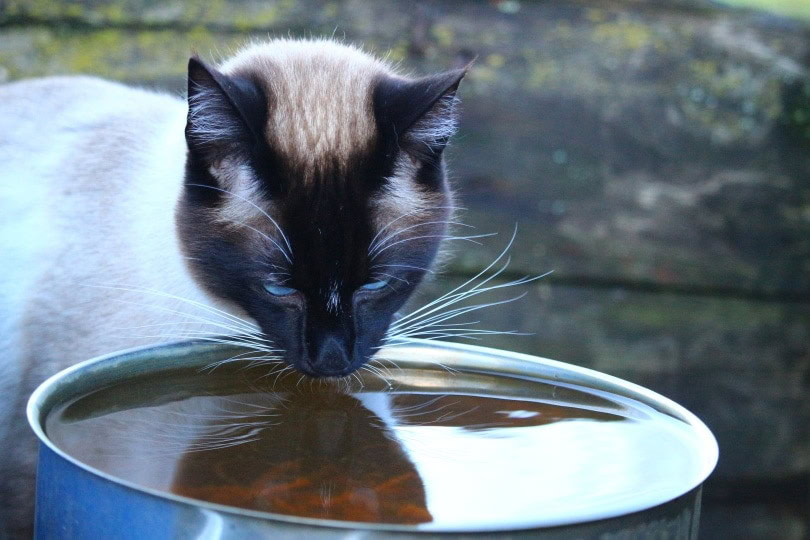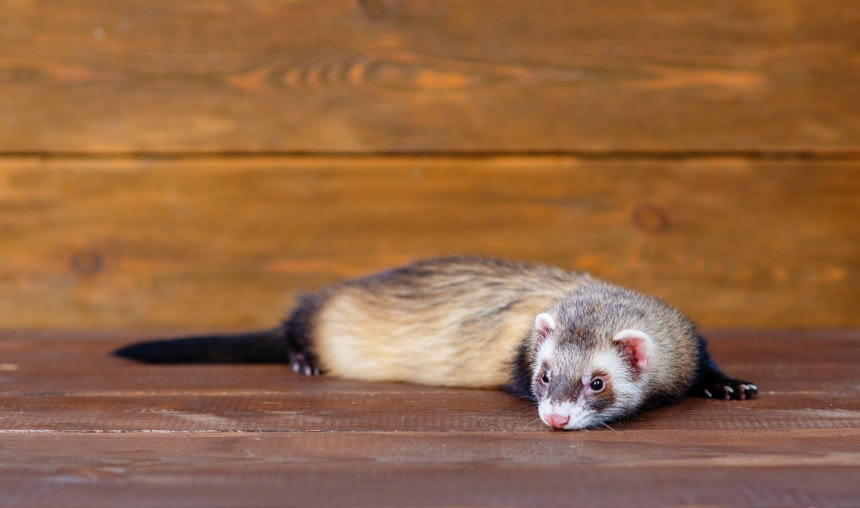VET APPROVED

The information is current and up-to-date in accordance with the latest veterinarian research.
Learn more »Click to Skip Ahead
Cats are interesting animals that show their personalities and feelings in various ways. They communicate with us through their actions, which need some interpretation from our side. Sometimes, cats do things for reasons that we can’t understand, like scratching on our walls. So, we must do investigative work to determine the reason for this action. Here are seven likely reasons that your cat might be scratching at your walls.

The 6 Reasons Cats Scratch the Wall
1. They Like the Feeling
Some cats scratch at the walls because the action feels good to them. Felines have a natural inclination to use their claws, and the activity helps them stretch their muscles, keep their claws in top health, and communicate with others. So, if they happen to be near a wall or don’t have anything else to scratch on, they might choose to use the wall as a scratching post.
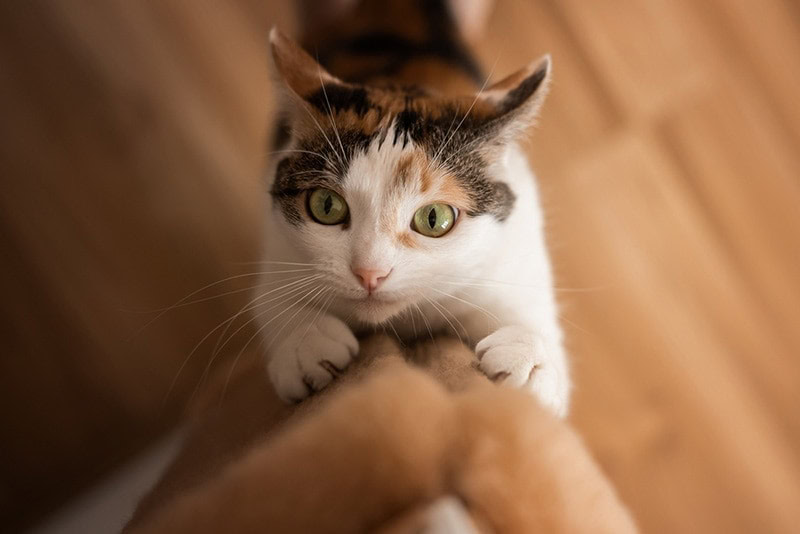
2. They Are Being Territorial
Another reason that your cat might be scratching the walls is to mark their territory. When they scratch a wall, not only are they transferring their pheromones to the wall, but they are also leaving behind unmistakable visual marks that let other cats and animals know that they have been there and that they might come back at any time. In other words, the territory marking is meant to be a warning to others that might find it.
3. They Are Simply Bored
If a cat doesn’t get enough mental or physical stimulation, there is no telling what kind of destructive behavior they will display. One way that they might try to rid themselves of boredom is to scratch their claws on the wall. Cats don’t understand that what they’re doing is tearing up your house. They do know that they are lacking stimulation, though, and they simply need something to do that will relieve their boredom and pent-up energy levels.
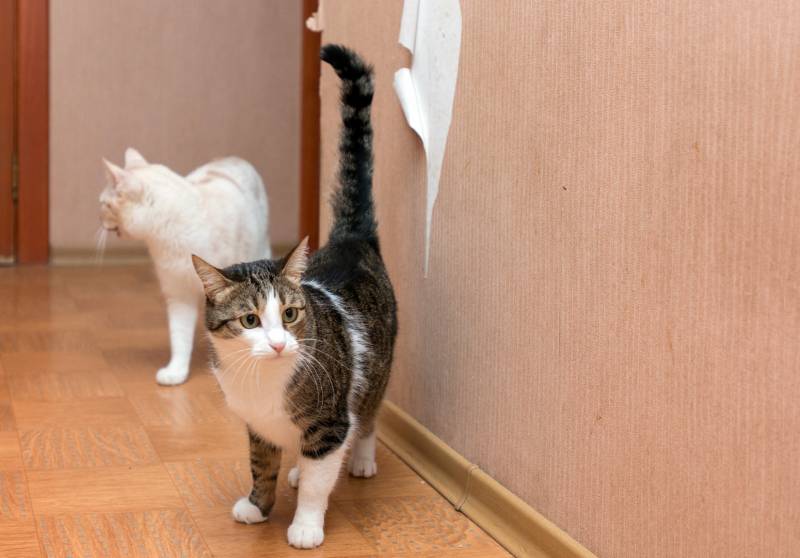
4. They Are Grooming Their Nails
Felines like to keep their claws in excellent condition for comfort and health reasons. By scratching their claws on something, the outer layers of their nails get worn down and shed to clear the way for stronger, healthier layers. You might notice that your cat’s nails look cracked or raggedy at the ends after they scratch on your walls. Eventually, the broken layers will come off, and the nails will look healthy again.
5. They Are Releasing Stress
Cats can get stressed out just like humans do. Their stress can be caused by things like moving to a new home, getting used to a new household pet, and spending too much time alone. When feeling stressed, cats engage in unusual behaviors, and they might end up scratching the walls, as they can be easily accessed in most rooms of the typical house, which makes them an easy fix for stress.
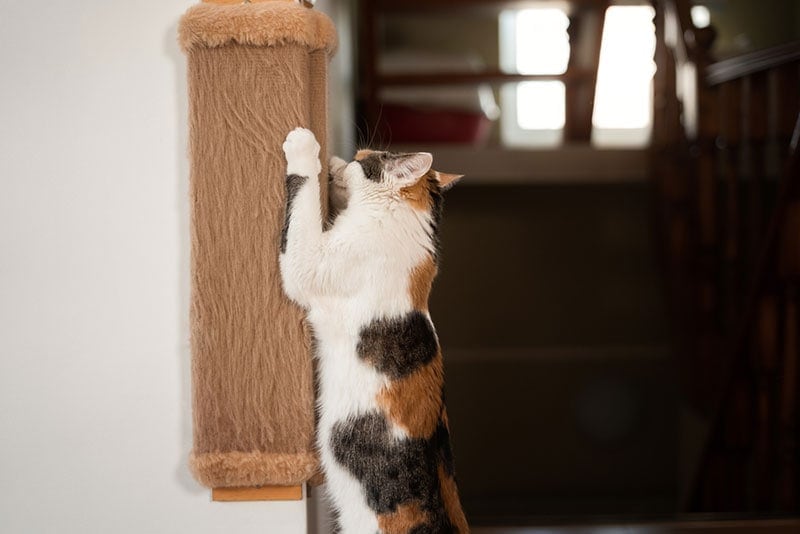
6. They Are Hunting Pests
If your kitty is like most, they are always on the hunt for prey, and their senses are always on alert. So, they are likely to hear a rat or cockroach when it is crawling around in the walls. If they do hear pests, they will want to try to get to that prey in any way that they can, even if that means scratching at the walls to do so. They don’t understand that no matter how much scratching they do, they’re not going to get through the wall.


The 4 Tips for Stopping Your Cat From Scratching the Walls
1. Provide Different Scratching Posts
Have several types of scratching posts available throughout the house so your kitty is more likely to scratch those instead of your walls. Try to place at least one scratching post in each room of your home that your cat likes to spend time in. Choose posts of different shapes, sizes, and textures for variety and to reduce boredom. Or choose the right one.
The Hepper Hi-Lo Cat Scratcher features a modern and clever design that offers cats an appealing place to scratch – and a way to keep them from scratching all the things they shouldn't. Unlike most cat toys (where your cat probably just prefers the cardboard box they came in), cat's flock to this design ... maybe it's because there's cardboard in it!
- Premium Materials - Hepper's cardboard scratcher is made with dense, B-flute cardboard, and a metal...
- High, Low and Lower - A single cat scratch pad won't keep your cat engaged. 3 unique positions keeps...
- Activates Muscles - The Hi Lo isn't just a cat nail file to stop the chief cat couch scratcher. The...
With its 3-position setup, textured cardboard, and sturdy frame, it encourages their natural scratching behavior, steering them away from clawing at items like furniture, walls, carpets, curtains, and people. The Hi-Lo is a reliable solution to safeguard your home and create a more enjoyable environment for your cat, all while looking modern and stylish.
At PangoVet, we've admired Hepper for many years, and decided to take a controlling ownership interest so that we could benefit from the outstanding designs of this cool cat company!
2. Get a Variety of Toys
Make sure your kitty has multiple types of toys to engage with throughout the day and night, including mechanical mice to chase and puzzle toys to solve. This will help ensure that they can get all the mental stimulation that they need for health and happiness. Switch out the toys with different ones a few times a month to keep things interesting. Saving all the switched-out toys for later use will help you save money on toys as time goes on.
3. Give Your Cat More Attention
Spend time with your feline to ensure that they don’t get too lonely and be more likely to be destructive within your home. Take the time to pay attention to your kitty for at least 10–15 minutes at least 2–3 times a day with no interruptions, and interact through cuddling, playing, and “talking” to each other. If you must spend time outside the home throughout the week, consider getting another cat. The cats can keep each other company when you can’t be there to pay attention to them.
4. Try to Discourage Repeating Behavior
If your cat tends to scratch the same areas of your home’s walls, try placing furniture, plants, or even paintings in front of the spots to make access harder. This will create obstacles that discourage your cat from continuing their scratching behavior. If these don’t work, consider attaching carpet scraps or cardboard to the areas to protect the walls. It won’t be pretty, but it should effectively keep the walls from getting scratched up.
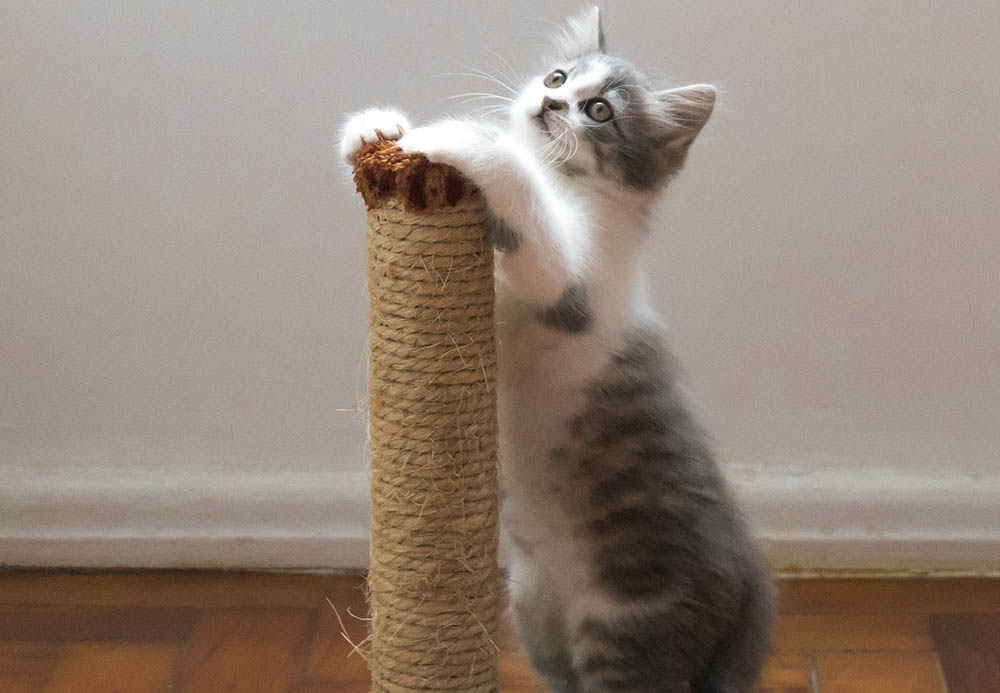

Conclusion
Cats can be destructive, but there is usually a reason for their behavior. When it comes to scratching your home’s walls, they could be doing it for one of the reasons outlined here. Once you understand why your kitty is displaying the behavior, you can determine the steps to take to help discourage it.
Featured Image Credit: Kryuchka Yaroslav, Shutterstock
